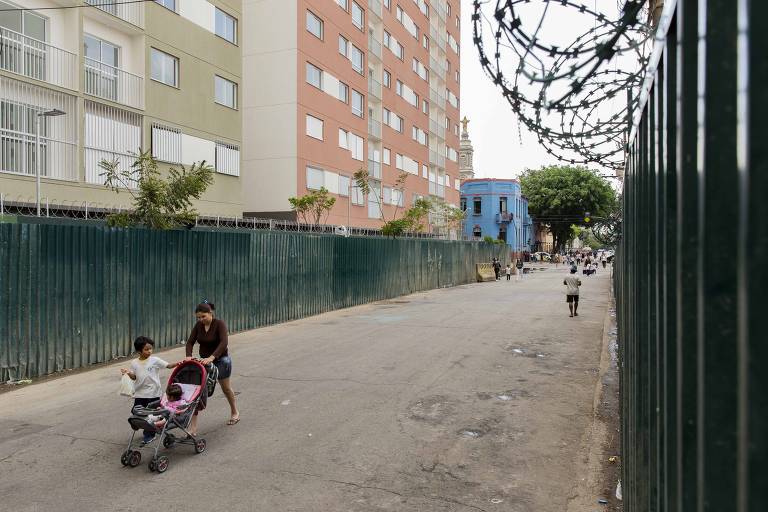A tree-lined path, with free movement of people, featuring a grocery store, daycare, music school, and shops, all in the ground floor of a housing complex that would serve as an extension of Júlio Prestes Square, in downtown São Paulo.
That was the state government's promise when it built five buildings to serve as housing projects in the middle of Cracolândia (Crackland).
But whoever passes by the recently constructed buildings is greeted with two walls, one made of brick and another of iron, both with barbed wire on top. There is also a reception desk, railings, police officers and hundreds of crack addicts.
A public-private partnership initiated during Geraldo Alckmin's administration built 914 apartments in the five-building complex, and another three are set to go up, adding 216 more units. The complex will also have stores, a daycare for 200 children, grocery store and a music school.
Since the original project counted with the drug addicts no longer being there, as the whole neighborhood was to be revitalized, it didn't call for any walls around the residential buildings.
But the new residents, fearful of their neighbors, are already coming together to make sure the walls and barriers with the outside world stay put. Without them, they say, they would be at risk for frequent trespasses and burglaries.
They are gathering signatures for a petition and meet to define how they will manage to keep the barriers.
For beautician Ludmila Príncipe, 27, who lives in a fifth-floor unit at the complex, the best idea would allow people to go to the shops and other facilities, but build a gatehouse closer to her building - and keep the wall.
"There are two doormen, security staff, cameras. And we are paying for that. We won't accept it [tearing down the walls]," she says, adding that she is afraid to walk out in the streets by herself at night.
Security concerns are also stopping others, who already got the keys to their units, to move there. From 914 already delivered apartments, only 347 are occupied -- according to the state government, other 567 are in the contract stage. The conclusion of the other two buildings is scheduled for the second half of 2019.
"All units have reception desk control to identify residents," and construction sites have their security staff, says the government.
"At the same time, the Military Police makes rounds in the neighborhood, with officers in motorcycles and special operations."
The area, several blocks in São Paulo where once stood the large palaces belonging to the São Paulo elite, started to deteriorate in the second half of the 20th century, especially from the 1990s on, when the so-called crackland was born, where crack addicts and drug dealers gathered together and never left.
Translated by NATASHA MADOV
